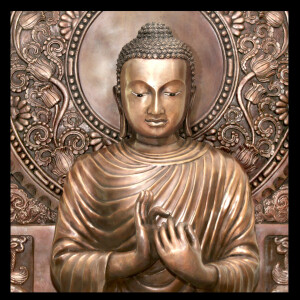
Anatta, the Buddha's Teaching on 'Not-Self' | Ajahn Dhammasiha
 2022-08-17
2022-08-17
One of best known features of the Dhamma is the teachings on 'Anattā' ('not-Self' or 'non-self'). It is rightfully regarded as one of the hallmarks of the Buddha's teaching, something that distinguishes it from all other spiritual or philosophical doctrines and religious beliefs.
And yet, there is considerable bewilderment as to the exact meaning of anattā, even among knowledgeable, well practised Buddhists, or in scholarly discussions. For instance, one can often hear the opinion that the Buddha teaches that "there is no self".
But did the Buddha ever literally say: "there is no self"?
There is at least one occasion where the Buddha is asked point-blank by the wanderer Vacchagotta whether an Attā exists or whether it does not exist:
"kiṃ nu kho, bho Gotama, atth'attā ti? ... kiṃ pana, bho Gotama, natth'attā ti?"
[Saṃyutta Nikāya 44.10 = Connected Discourses 44.10]
Fascinatingly, the Buddha refuses an answer to either question, but instead remains silent.
And there is another quote where the Buddha explains that anyone who clings to either of the following two views as true and absolute:
"My self exists" ("atthi me attā ti")
"My self does not exist" ("n'atthi me attā ti")
[Majjhima Nikāya #2 'Sabbāsavasutta' = Middle Length Discourses #2 'All the Taints']
has "gone into the thicket of views, the desert of views, the contortion of views, the vacillation of views, the fetter of views".
So what, then, does the Buddha teach regarding self?
He teaches that:
"all phenomena are not self".
"Sabbe dhammā anattā"
[e.g. Dhammapada Verse 279]
He teaches that form is not self, feeling is not self, perception is not self, volition is not self, consciousness is not self. He teaches that the eye is not self, forms are not self, ear, sounds, nose, fragrances, tongue, flavours, body, sensations, mind, ideas are not self.
Some may object that this is merely splitting hairs. They may feel that there is virtually no difference between saying that there is no self, and saying that all phenomena are not self. But it's a huge difference. The statement "there is no self" is building up a merely intellectual opinion, it is establishing a doctrine which in itself becomes ground for clinging, and immediately puts one in direct conflict with anyone who believes the opposite, that "there is a self".
On the other hand, to state "phenomena are not self", or "form is not self" is aimed at letting go. It's not an attempt at philosophical speculation, the development of views and opinions in one's head. Instead, it is a meditation instruction, it is a tool to be used to abandon attachment. The Dhamma is not trying to establish 'absolute' truth by means of words, thoughts and notions. It's not an abstract philosophy. Instead, it's a pragmatic instruction that is applicable ('opanāyika') to our personal situation, a medicine to treat the suffering we feel in our heart. It's whole purpose is simply to induce letting go. Once we contemplate and clearly see form, feeling, perception, intention and consciousness as not self, not me, and not mine, the heart lets go of them.
With this insight, the whole delusion of self is destroyed and abandoned for good, as it is impossible for the delusion of self to be established anywhere else than on these 5 groups of clinging. In fact, it's quite impossible to even meaningfully express an intellectual view of a self other than in reference to them.
www.dhammagiri.net
www.youtube.com/channel/UCJINt0JJBfFm_x0FZcU9QJw
www.tinyletter.com/dhammagiri/archive
More Episodes
Create your
podcast in
minutes
- Full-featured podcast site
- Unlimited storage and bandwidth
- Comprehensive podcast stats
- Distribute to Apple Podcasts, Spotify, and more
- Make money with your podcast
It is Free
- Privacy Policy
- Cookie Policy
- Terms of Use
- Consent Preferences
- Copyright © 2015-2024 Podbean.com






